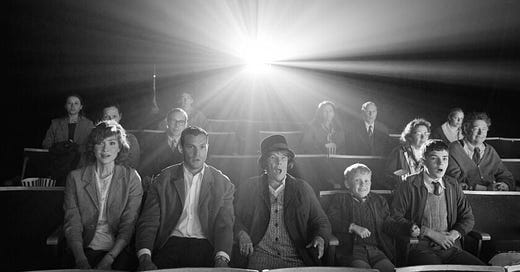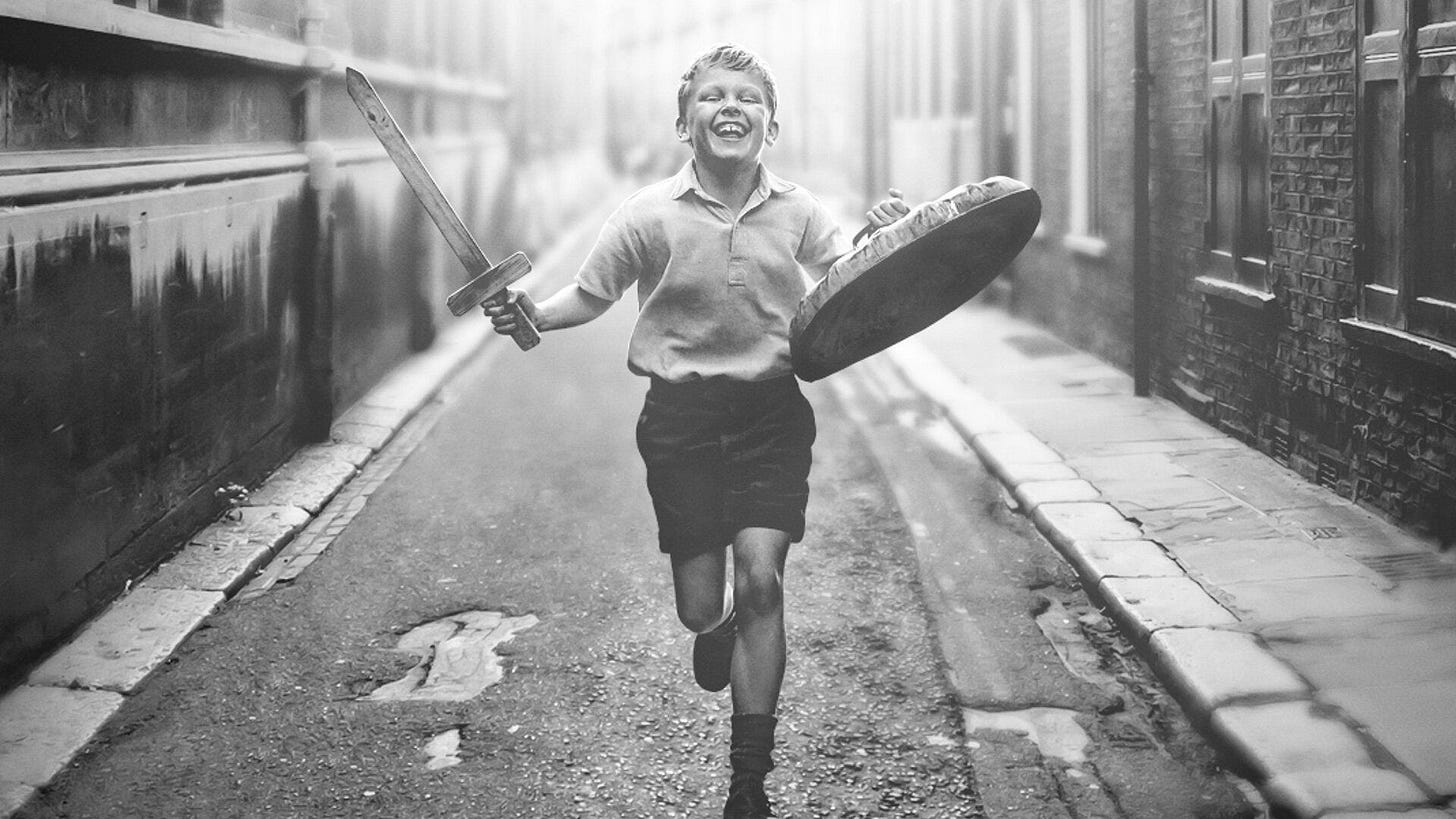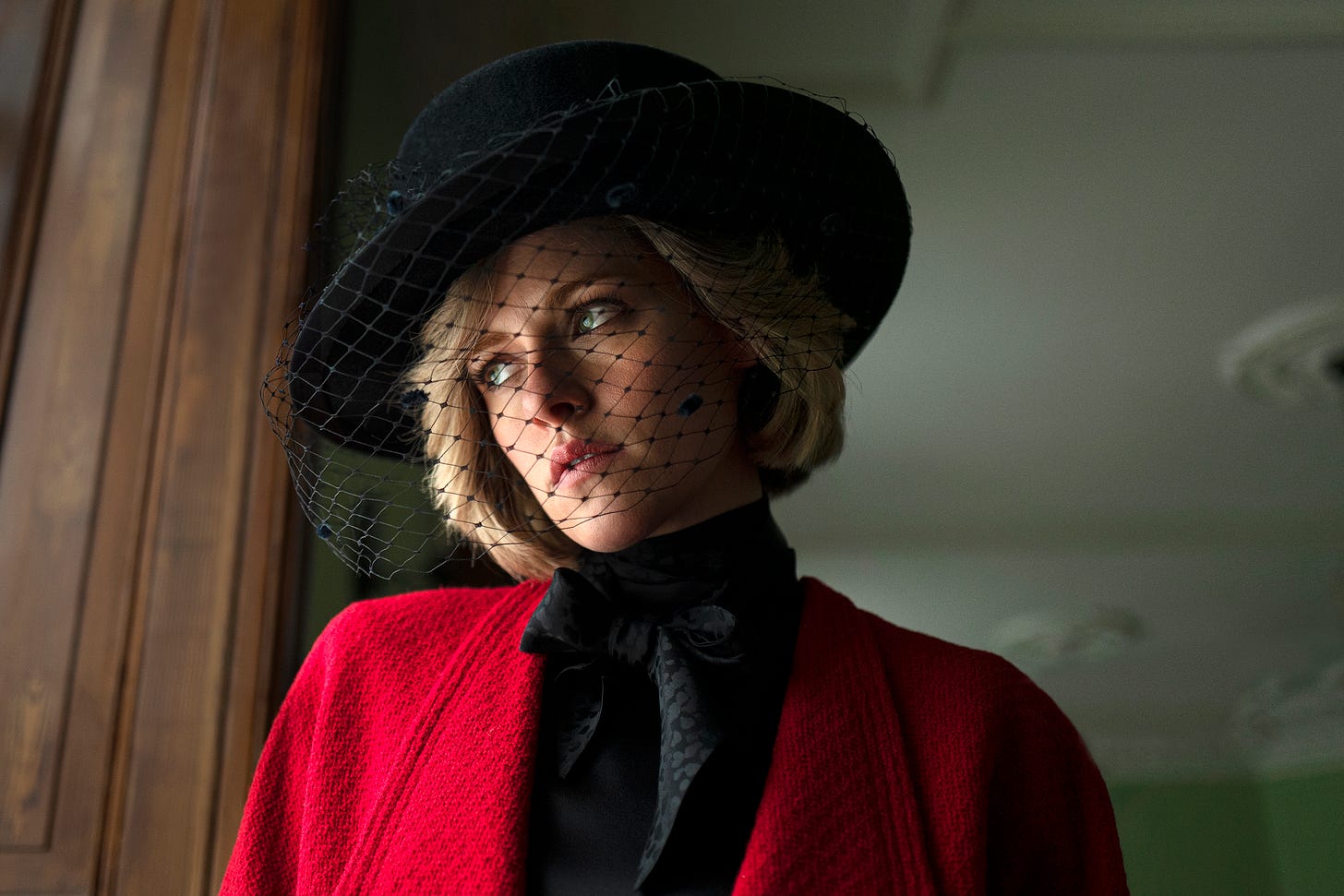Double feature: 'Belfast' and 'Spencer'
Kenneth Branagh and Pablo Larrain deliver a good night at the movies.
Last weekend, I had a free Saturday to head out to the movies and do another double feature; I’m quite enjoying these opportunities when they arrive. So today, I wanted to write about Belfast and Spencer. Honestly, both movies probably deserve their own separate posts — and you will have an opportunity to hear me talk about the former in greater detail soon elsewhere — but I wanted to get them both written up this week.
Also, just a quick note. I’m suffering an annoying cold as I write this (Tuesday night) and am pretty doped up on cold medicine. So if these ramble a bit, you know why.
Belfast
I’ll confess that I was skeptical of Belfast when I took my seat. Trailers made it look like the type of manipulative, tear-jerky coming-of-age film Miramax always managed to secure a Best Picture nomination for in the 00s that aims for greatness but feels calculated. It didn’t help that it was directed by Kenneth Branagh, whose work over the last decade has included one of the worst Marvel movies, the absolute worst Jack Ryan movie, and arguably the worst movie to be released on Disney+.
I was pleasantly surprised to be wrong. Belfast may not be a great movie, but it’s a lovely and charming one, accentuated by strong performances and a personal touch.
Drawing from his own childhood recollections, Branagh wrote and directed the story of Buddy, a young boy growing up in Belfast, Ireland in 1969, just as the skirmishes between Catholics and Protestants ravage his neighborhood. Buddy’s parents (Jamie Dornan and Caitriona Balfe) begin to consider whether these new worries, coupled with their already mounting financial woes and Pa’s obligation to his out-of-country job, should prompt them to pull up roots and move. Meanwhile, Buddy’s grandparents (Ciaran Hinds and Judi Dench) watch this all unfold as they also face the trials of getting older.
It could all lead to a somber film, but Belfast is often light and funny. Filming in black and white with occasional bursts of color, Branagh’s coming of age tale explores that moment when the innocence and mystery of childhood begins to give way to the complexities and uncertainties of adulthood. Its most probing question is how we learn to be a decent person, and the impact that those around us have on helping us make that decision.
We learn early on that many of the Protestants in the neighborhood are rioting and burning the homes of Catholic families to purge their community of them. Buddy’s parents are not religious but send their children to the local Protestant church to appease their grandparents. In one of the film’s funniest cuts, Branagh highlights the fear-based religion that riles up the community and leaves Buddy with a question that will haunt him for the rest of the film: how does he know the right road to choose in life?
That answer isn’t going to come from religion, though; Branagh relegates that to the background. Rather, the answer for Buddy comes from the people around him, both in his community and in his household.
One thing I’ve learned very quickly as a parent is that children are always watching and listening. My wife and I always have to be sure there aren’t little ears or eyes around when we have a conversation. Several times through Belfast, Branagh shows grown ups talking about their hopes, fears and struggles while Buddy is listening through a nearby window or around the corner. As his world is growing more complex, he’s turning to the adults to help him navigate and understand it, and they provide a counterpoint to the world outside his home, where gang members prompt him to steal candy bars and angry protesters conscript his brother in their plans.
Hill is a cute and charming lead, and carries the film well. He’s aided by a fantastic cast of veterans. Dornan is particularly good as Pa, portrayed as a kind and loving father with his own vices and blindspots that often complicate matters for the family. Balfe is also strong as Ma, who holds down the fort while Pa is often out of town and struggles to keep her boys on the straight and narrow when the neighborhood is trying to enlist them in their battles. She’s torn between doing what’s right for them and her love for the community where she grew up; Balfe is particularly good in a scene where her character has to take in some news about a new opportunity for the family and what it might mean for her children and her marriage. It should be no surprise that Hinds and Dench are standouts, portraying a tender and sweet marriage in its winter years. Dench brings years of wisdom and a touch of sorrow to Granny, and Hinds is funny as the gruff Pop, but a master at letting us know there’s more going on between his bon mots and words of gentle wisdom.
The cast helps bring depth to a script that often feels a bit pat and familiar. The crush Buddy develops on a young girl is sweet, but the film’s final scenes use it to hammer home themes of acceptance that were already implied. I wish the film had delved more into the religious conflict and history of the Troubles, but I understand that’s a different story than Branagh wanted to tell. And while I enjoy the way the director uses color to express the ways movie and television spark something in Buddy, I would have appreciated him digging a little bit more into how those works of art expressed themselves in the child when he left the theater or turned off the TV. It’s probably not fair to say this, but I found that use of color a bit underwhelming after Wes Anderson did something similar (and better) in The French Dispatch.
There’s a great movie that feels like it’s lurking at the edges of Belfast, and instead Branagh just makes a fine one. It’s a very enjoyable, often very moving, film. And its personal nature helps it rise above its platitudes. I enjoyed the time I spent with Buddy and his family; in the end, I hoped for more. And that’s not necessarily a bad thing. It’s a crowd pleaser, and I’ll admit its final moments hit all the right emotional spots well. Maybe Branagh could have dug deeper, but I also feel like this is exactly the story he wanted to tell.
If you’re enjoying this newsletter, can I ask a favor? Share it with a movie-loving friend of yours. I want to broaden this conversation and bring more people aboard, and would love to welcome new subscribers.
Spencer
I was surprised to find myself in the theater for Pablo Larrain’s Spencer. I’m historically not someone with an interest in the royal family, and I didn’t pay much attention at all to Princess Diana during her lifetime. It’s all been a bit too starchy, staid and classist for my tastes.
But that, of course, is part of what nearly drove Diana to a nervous breakdown, according to Larrain’s film. Its title comes from her pre-marriage surname, and the film explores the loss of identity she feels as the pressures of royalty crush down on her.
The film takes place over a Christmas weekend at the royal family’s Sandringham Estate, close to the home where Diana grew up. As the royals arrive to begin the festivities, Diana is nowhere to be seen. Instead, she’s gotten herself lost in the country and has stopped at a gas station to ask directions. She’s a nervous wreck. Charles’ affair has become public knowledge, the couple’s marriage is in tatters, and Diana sees herself the target of everyone’s stares and suspicions. As the holiday continues, she obsesses over Anne Boleyn, struggles with an eating disorder and tries to grasp at any moments of normalcy with her sons that she can have.
The film bills itself as “a fable about a true tragedy,” the type of description that would normally have me rolling my eyes. But Larrain, working from a script by Stephen Knight, knows that a traditional biopic would not help us get into the mind of such an iconic figure (besides, The Crown already exists), and the turn to imaginative psychodrama helps us better understand Diana’s fears, neuroses and despair.
As Diana, Kristen Stewart gives the performance of her career. When she first appeared on screen, I was taken aback by the awkward way Diana conducts herself in a gas station. But Stewart conveys her as a person who has nowhere she can appear comfortably. In public, she’s a celebrity and larger-than-life, the target of tabloid stories and constant discussion. Among the Royals, she’s an interloper, their eyes constantly watching her for any misstep or breach of tradition and decorum. Stewart, no stranger to tabloid rumors herself, ably portrays a woman whose identity is collapsing in on itself, who feels herself being smothered by the expectation to adhere to a certain persona even if it chokes the life out of her. But she also comes to life in moments with her two sons.
The setting for the film is crucial. By limiting the film’s story to a single weekend at the Sandringham House, Larrain increases the tension by focusing on Diana at a crucial turning point; will she sacrifice her old self to fit others’ expectations, or will she decide to pursue something like freedom? Set within the walls of the massive estate, with their ornately decorated rooms featuring portraits of long-dead royals, we get the sense of history suffocating and overwhelming Diana, even as her childhood home is only a few hundred yards away.
The film often unfolds like a horror story, with Larrain turning to hallucinations, ghostly confrontations and flights of the imagination to capture Diana’s fraying mindset. Diana imagines herself chewing the pearls Charles gave her as a Christmas gift (which he also gave his mistress), she throws up her Christmas dinners, rebelliously changes outfits before heading to Mass and cuts herself with wire cutters. The royals, for their part, are worried her outlandish behavior will leak to the press or a paparazzi member will snap pictures of Diana changing, and they close in to control her behavior and put a lid on anything unpredictable which, of course, only causes her to further rebel. Her only quiet moments are when she can steal away with her sons or have time with her old friend and attendant (Sally Hawkins).
Larrain is masterful at capturing Diana’s mindset, and the film manages to make the palatial estate both elegant and intimidating. That’s fitting; this lifestyle is killing Diana, but it’s also what she’s wanted her whole life. Larrain understands why people are fascinated with the royals but also how that very tradition and decorum can smother the personalities involved. Johnny Greenwood supplies one of the year’s best scores, with lush strings giving way to a manic jazz score to capture that clash between elegance and anxiety. And Stewart is aided by a supporting cast that includes strong performances by Timothy Spall, Hawkins and Sean Harris.
There are a few points where the monologues are a bit too on the nose, the poetics hammering home what the subtext is caring perfectly well. And even with the fable structure, some of the film’s final moments are a bit hard to believe (a late shot involving a drive thru is particularly ham-fisted). And yet, I don’t know how else you can begin to deal with someone who’s larger than life without going just as big. If it’s not perfect, it’s still often very effective, and Spencer is one of the year’s best films.







